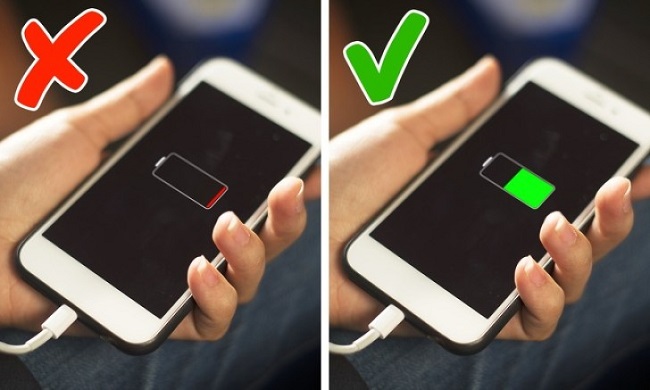9Myth 9: You can’t charge your phone until the battery is completely drained
Advertisement
Not many even bother to abide by this myth which surprisingly is advice from many. This advice is irrelevant for lithium-ion batteries that are best kept at 60-80% charge. You don’t need to wait till the battery drains completely before charging your phone again.

Image Source: www.culturehook.com
10Myth 10. Airport scanners can damage memory cards
Advertisement
The X-ray scanners used by security in an airport cannot damage a memory card or wipe out data; however, they can damage the film of a non-digital camera.

Image Source: cloudfront.net
11Myth 11. You have to charge a new phone for more than 8 hours
Advertisement
This is usually the advice many ship-owners will give you when you purchase a new phone. But, this is not necessary. This was the case when Nickel-cadmium or Nicad batteries were used and which had a chemical memory. This memory made it impossible to charge them again beyond the time of the first charge. Li-ion batteries don’t have that same problem.

Image Source: www.techguide.com.au
12Myth12. Androids are full of Malware
Advertisement
iPhone users feel that Androids are a wild west of malware which isn’t the case. It may be true that Androids have the potential to invite more threats and risks but as long as you don’t keep downloading apps that are not recognized your are safe. Moreover Android has several firm security measures in place for protection. There is also Google play protect that warns of spurious apps carrying malware.

Image Source: betanews.com
13Myth 13. Cell phones give you brain cancer
Advertisement
Among myths about devices, this is probably the most famous scare of all time since the invention of the cell phone. Till date no research data has linked cellphones top brain cancer. Even a study in the UK took 11 long years to finally conclude it doesn’t.

Image Source: magicgate.eu
But be careful of using phones at night
Advertisement
However, the blue light emanating from the screen can impact sleep in adults and children causing insomnia. The light affects melatonin production and delays sleep.

Image Source: www.insidescience.org